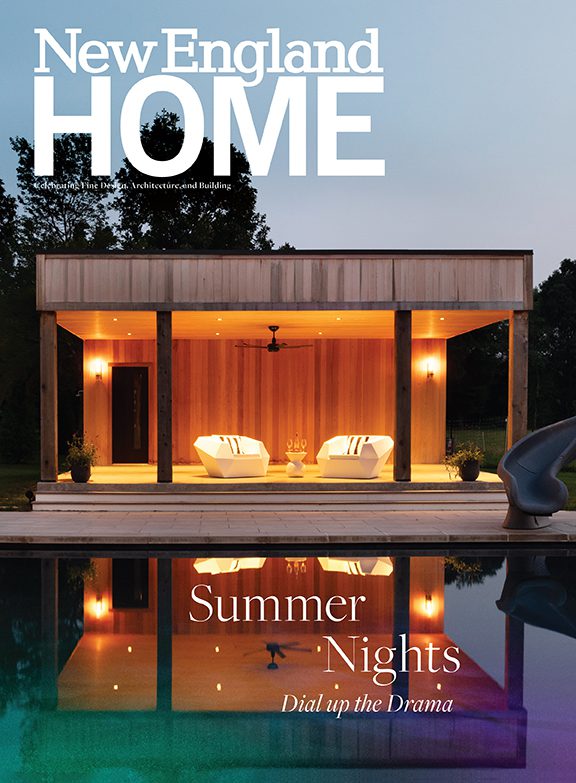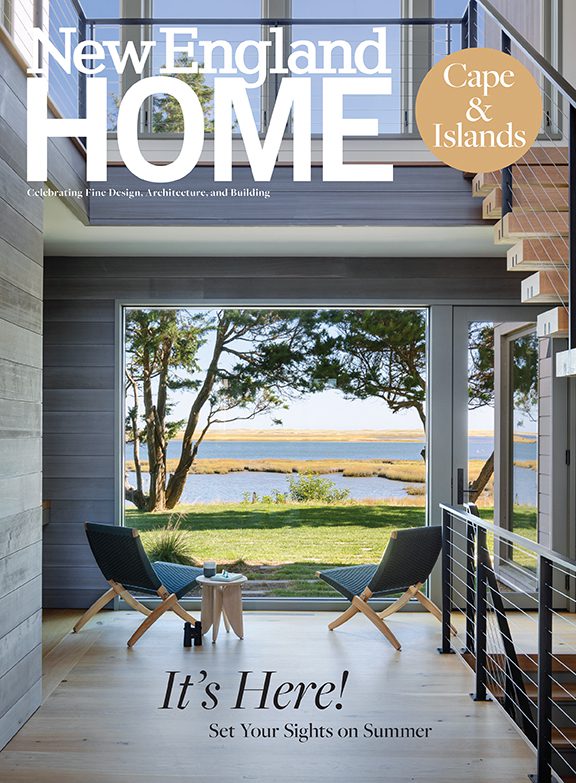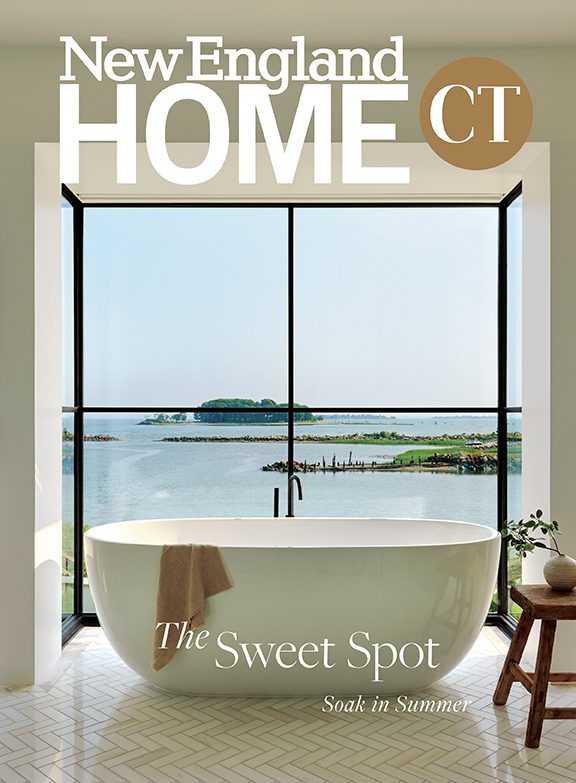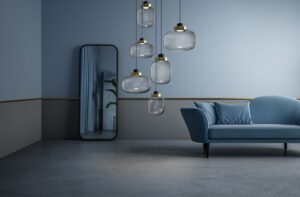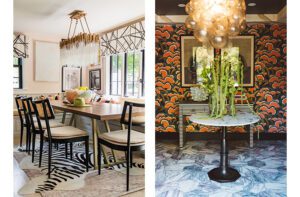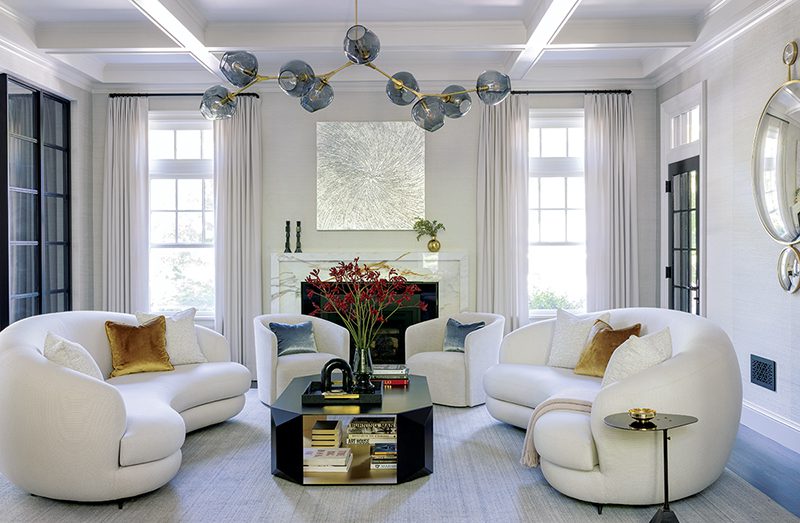Living Larger
May 11, 2011
Text by Louis Postel
As Tom Cruise begins filming Rock of Ages in New York this spring, droves of idling extras will be pondering an all-consuming question: is the ageless actor wearing shoe lifts, as he was purported to have done while married to Nicole “now I can wear heels again” Kidman? Before we explain what this juicy query has to do with design here in New England, fly like a crow 187 miles due north to Wilson Farm in Lexington, Massachusetts, where the local Audubon chapter is showing off Squeaky the owl. The Audubon volunteer explains this and that about our wise friend (“No, he can’t turn his head 360 degrees, and, yes, he hunts gliding on wings designed for silence”), but one fact in particular inspired Trade Secrets this month. Squeaky’s pointy ears aren’t ears at all—they’re tufts of feathers that make owls appear more imposing than they really are. Combine that with shoe lifts, and Squeaky would be invincible! Which brings us to the real question: how do designers and architects make the small seem larger? What are the design equivalents of shoe lifts and tufted feathers?
Patrick Planeta of PlanetaBasque Boston, a winner of New England Home’s 2010 5 Under 40 Awards, works on projects from Concord to Curaçao, Brookline to Shanghai. “Add high-gloss oil paint on wall or ceiling panels to maximize reflection and the feel of infinite space,” he suggests. “The use of reflective material brings in shadows from objects from the room and surrounding environments,” creating the illusion of a much larger space. Adds his partner, Meredith Basque: “We like to use wall niches for housing simple and interesting sconces. They make for a nice glowing panel flush in the wall plane—and one less protruding object. Also, stripes on the floor—painted, in carpets or the direction of the floor planks—can create a horizon from space to space, a continuation.”
Designer Andie Day just moved into a 200-square-foot office on Hanover Street in Boston’s North End. How did Day manage to make the studio feel so spacious? To draw the eye up toward the room’s high ceilings, she installed a splendid rendition of the aurora borealis in the form of backlit purple-pink ceiling tiles. The bathroom was so tiny, Day says, “you actually had to sit on the toilet to wash your hands.” Now it feels roomy enough, thanks to a tankless toilet, a twelve-inch Euro-modern vessel sink and wall-mounted faucet and a half-wall mirror reflecting another mirror opposite. “Beautiful finishes like these take your attention away from the size of the space,” says Day.
Designer Kristin Paton of Cambridge, Massachusetts, has a résumé that seems to chart the evolution of fine design on the East Coast. In New York, she worked for Sister Parish and Albert Hadley. In Boston, her employers included Jack Coar, William Hodgins and Eugene Lawrence, as well as the late Reid Canavan. In London, where Paton lived and worked for a time, homes were small and had narrow staircases, she recalls. “We would take windows out to move sofas in, or we’d have them in pieces and the upholsters would put them together on the spot.” To enlarge a room, she suggests setting oversized panels of antique mirror in the wall. “Create a custom molding to frame it and make it look like part of the interior architecture,” she advises.
Architect Ramsay Gourd of Manchester and Burlington, Vermont, suggests leveraging the vast outdoors to make the indoors feel more expansive. “Have large windows that open up,” he says. “Try to find an element outside—or create one—that’s a visual continuation of the inside. Rather than treating a window view like a flat painting, extend the floor plane out to a hedge, a garden wall or a terrace.” As for furnishings, he says, a room can feel bigger if the furniture color is similar to that of the walls, making it recede into the background “rather than behaving like a separate object in space.”
“Magazine people are always asking about how to make a small space bigger,” says designer Susan Corson of Newton, Massachusetts. “It’s not always a question of feeling bigger but of feeling right. Rule of thumb: use fewer and larger things, and make sure there is some space around each one. Use simple, sculptural pieces; try making just one the focus, so your eye won’t be jumping all over the place.” In a tiny dining room Corson is designing now, she’s replacing the rectangular table with a round one. “Now there’s space in the corners and the room isn’t so boxy,” she says. A platinum Osborne & Little wallpaper with a shimmery, reflective surface will add a sense of space, as well.
No matter the size of the room they’re standing in, some people just seem larger than life. Such was the case with designer Lee Bierly, who with Christopher Drake, his partner in business and in life, was a shining light in the New England design community. Here’s an homage I wrote to him on New England Home’s Facebook page shortly after his passing in February: “Lee, you were such a wild and lovely and generous guy. How your low, breathy voice would promise such high adventure! Within five minutes you’d take us from serious design business to somewhere else light-years away: high-ceilinged rooms in some imaginary palace of your heart reserved for stoppers-by. There was so much light in those rooms, so much space to play, so many witticisms and enthusiasms to match and to exchange! Goodbye . . . for now.”
Share
![NEH-Logo_Black[1] NEH-Logo_Black[1]](https://b2915716.smushcdn.com/2915716/wp-content/uploads/2022/08/NEH-Logo_Black1-300x162.jpg?lossy=1&strip=1&webp=1)
